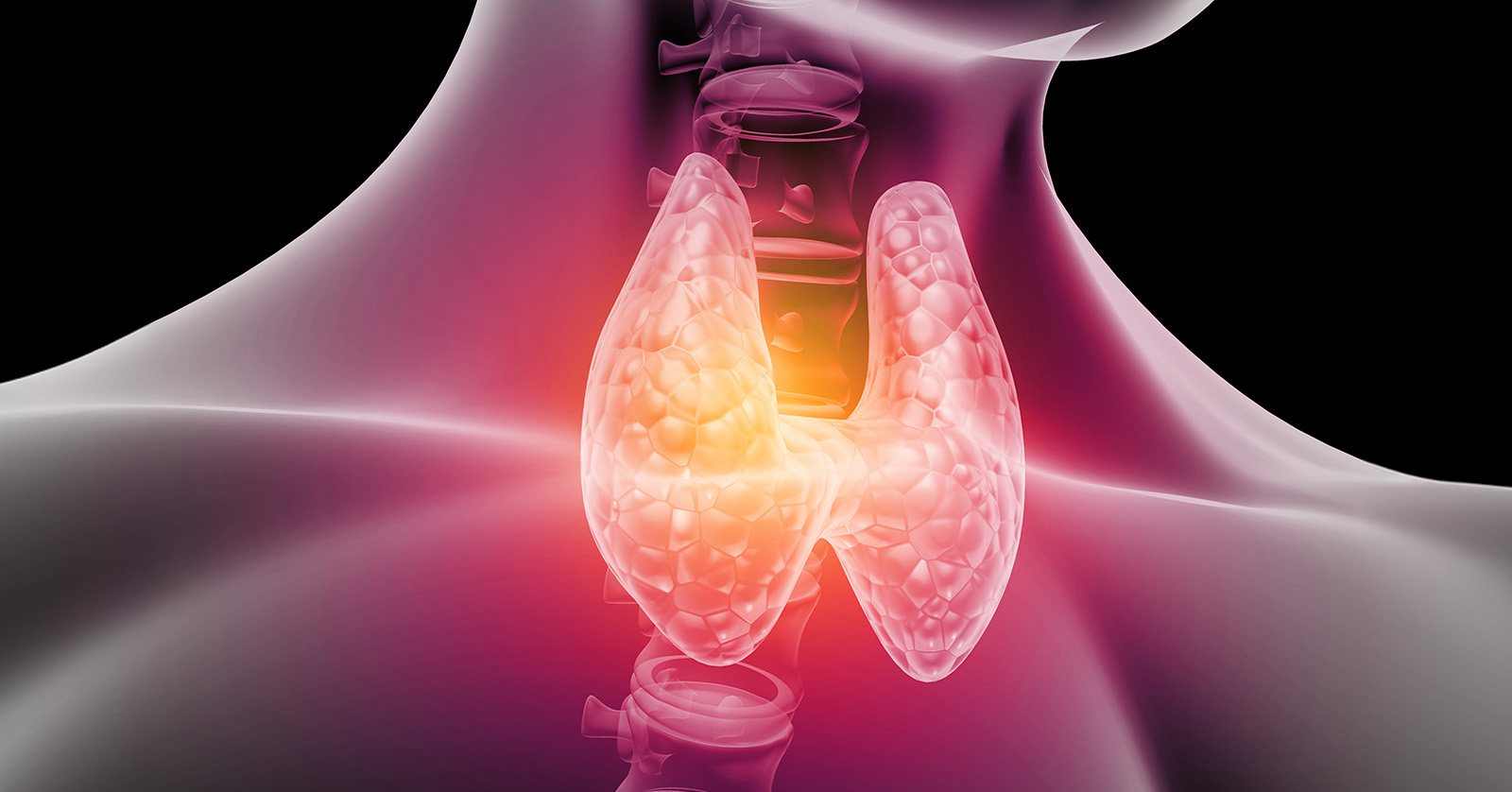
Subclinical hypothyroidism during pregnancy, an asymptomatic imbalance of thyroid hormones, may be associated with a higher risk of low thyroid functioning (hypothyroidism) within 5 years after giving birth, suggests an analysis funded by the Eunice Kennedy Shriver National Institute of Child Health and Human Development (NICHD).
Moreover, pregnant women with higher levels of antibodies to a thyroid enzyme (which can indicate that the immune system is mounting an attack on the thyroid) were also at higher risk of hypothyroidism within 5 years of giving birth.
The study was conducted by Michael Varner, M.D., of the University of Utah Health Sciences Center and colleagues in the NICHD Maternal-Fetal Medicine Units Network.
Background
Hypothyroidism occurs when the thyroid gland, located in the front of the throat, doesn’t produce enough hormones to meet the body’s needs. Symptoms include fatigue, weight gain, cold intolerance, slowed heart rate, and depression. Treatment involves replacing the hormone thyroxine, which the thyroid fails to produce. Untreated hypothyroidism during pregnancy increases the risk of low birthweight and impaired neurocognitive development in newborns.
Thyroid-stimulating hormone, made by the pituitary gland, causes the thyroid to produce thyroxine. Subclinical hypothyroidism occurs when the pituitary gland produces a high level of thyroid stimulating hormone, but the thyroid still produces normal amounts of thyroxine. Although subclinical hypothyroidism can progress to hypothyroidism, the condition doesn’t cause symptoms and may not require treatment. In the United States, subclinical hypothyroidism may occur in 2 to 2.5 percent of pregnancies. Hypothyroxinemia is a condition in which thyroid stimulating hormone levels are normal, but thyroxine levels are low.
The NICHD Maternal-Fetal Medicine Units Network previously conducted clinical trials of pregnant women treated for subclinical hypothyroidism and for hypothyroxinemia. Pregnant women were enrolled in the first half of pregnancy and randomized to receive either thyroxine or placebo. The study found no difference in pregnancy outcomes or infant neurocognitive development between the treated and untreated groups.
For the current study, researchers compared questionnaire and laboratory data from participants who were not treated in pregnancy for subclinical hypothyroidism and hypothyroxinemia to evaluate their thyroid status at 1 year and 5 years after giving birth.
Results
Of the 307 participants with subclinical hypothyroidism, 13.4 percent had hypothyroidism a year after delivery, and 3.1 percent of the 299 participants with hypothyroxinemia had hypothyroidism at the same time point. Similarly, after 5 years, 15.6 percent of those with subclinical hypothyroidism had hypothyroidism, and 7.5 percent of those with hypothyroxinemia had hypothyroidism. Most of the participants with hypothyroidism were diagnosed by the study’s laboratory tests and had not been diagnosed previously.
Participants with subclinical hypothyroidism who had high levels of antibodies to the enzyme thyroid peroxidase also had higher rates of hypothyroidism after 1 year (26.7 percent vs 6.5 percent with lower thyroid peroxidase antibody levels) and after 5 years (30.5 percent vs 7.5 percent). Antibodies to thyroid peroxidase are considered a sign of an immune system attack on the thyroid.
Significance
The authors concluded that, although the original study showed no differences in 5-year neurodevelopmental outcomes in children from pregnancies that were treated or untreated for subclinical hypothyroidism or hypothyroxinemia, the current study provides evidence that hypothyroidism in the parent is likely to occur in the year after pregnancy.
“Because autoimmune diseases like hypothyroidism are known to occur during this interval, providers and birthing parents may consider testing for thyroid disease if they have symptoms of low thyroid function,” Dr. Varner said.
Reference
Varner MW, et al. Progression of gestational subclinical hypothyroidism and hypothyroxinemia to overt hypothyroidism after pregnancy: pooled analysis of data from two randomized controlled trials. Thyroid. 2024. DOI: 10.1089/thy.2023.0616

 BACK TO TOP
BACK TO TOP